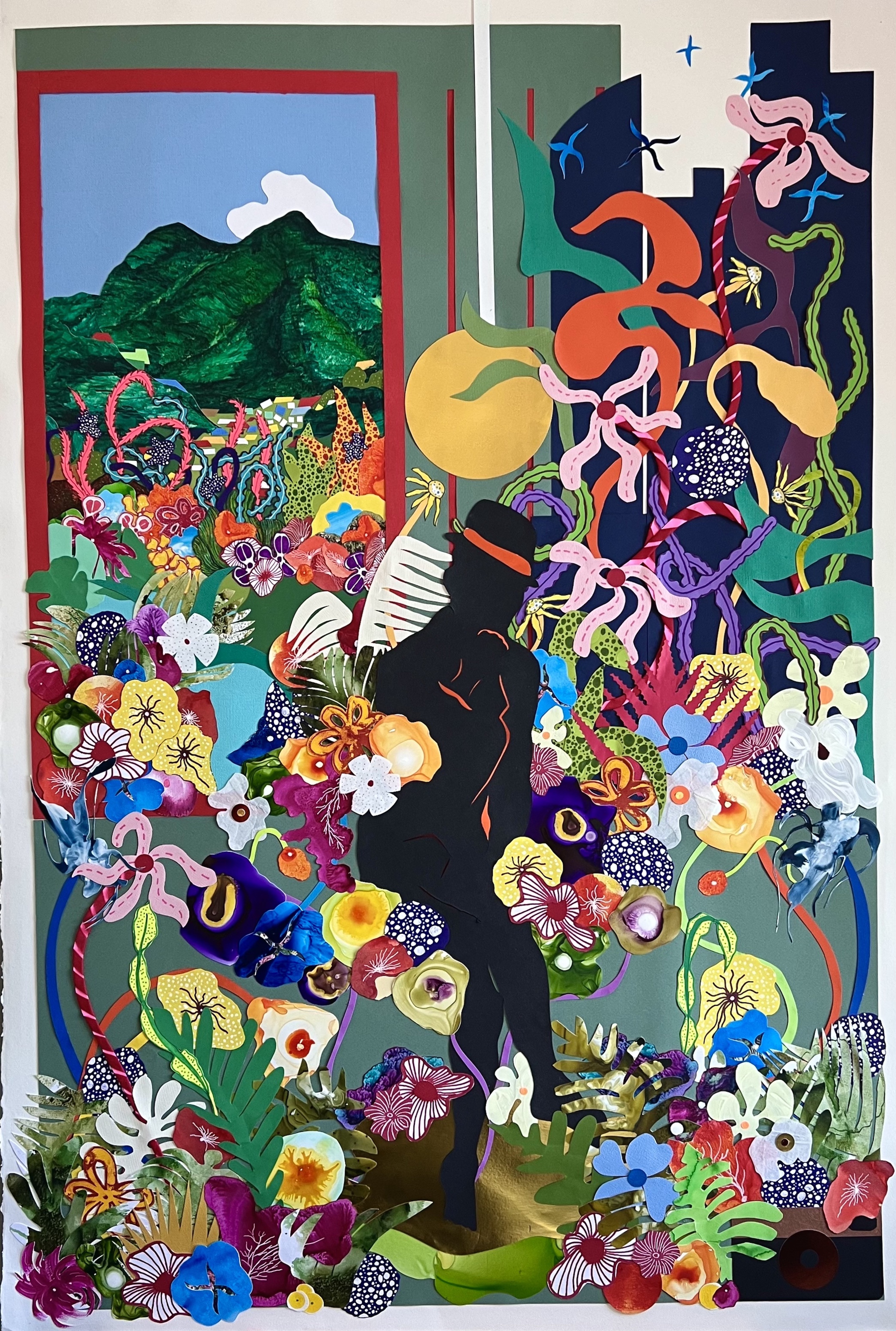sx art
sx art is the Small Axe Project platform devoted to visual practice and its place in Caribbean cultural, social, and political life. Since its inception, our print journal Small Axe, has been concerned to explore ways in which visual practice, and more generally Caribbean visual culture, has been at the center of the experimental cultural, political, and aesthetic imagination of the region and the diaspora. The journal has consistently featured the work of artists on its covers, developing a distinctive style and sensibility and focus. During this period, also, reflecting our recognition of the increasing importance of visual arts to the self-consciousness of Caribbean critical practices, Small Axe has published visual art portfolios that engage in greater depth the work of contemporary and emerging artists. sx art aims to expand this work, presenting visual culture across a range of genres and forms: from photography to the moving image, from performance to architecture, from soundscapes to painting and sculpture. We aim to create a significant body of visual material with a scope and breadth that contributes and compliments what has gone before. In our view, it is through further discussion and questioning of visual material created by and about the Caribbean, that more progressive insights and meanings may be gained. sx art will unveil a new visual arts-focused feature every January, May and September.
Curatorial Director
Andil Gosine
andil@yorku.ca
artists / project
sx art 2
-Llanor Alleyne
ANOTHER POEM
In 2022, Barbados-born, New York-raised collage artist Llanor Alleyne became one of five artists selected for a residency at the Leslie-Lohman Museum of Art in New York that culminates with the opening of The Plural of He on March 15, 2024. Each artist engaged with the archives of Trinbagonian poet-writer and queer social justice advocate Colin M. Robinson to produce work that developed their personal and political connections with him, as experienced through the materials he left following his passing in 2021. For Alleyne, Robinson’s 2016 collection of poems, You have your father hard head, and a photograph from the Leslie-Lohman permanent collection by Robert Girard sparked explorations about queerness, migration and belonging that led to her construction of a stunning new layered collage. In January of this year, Alleyne shared her experience of this process with Trinidadian writer and close friend of Robinson, Anton Nimblett. Andil Gosine
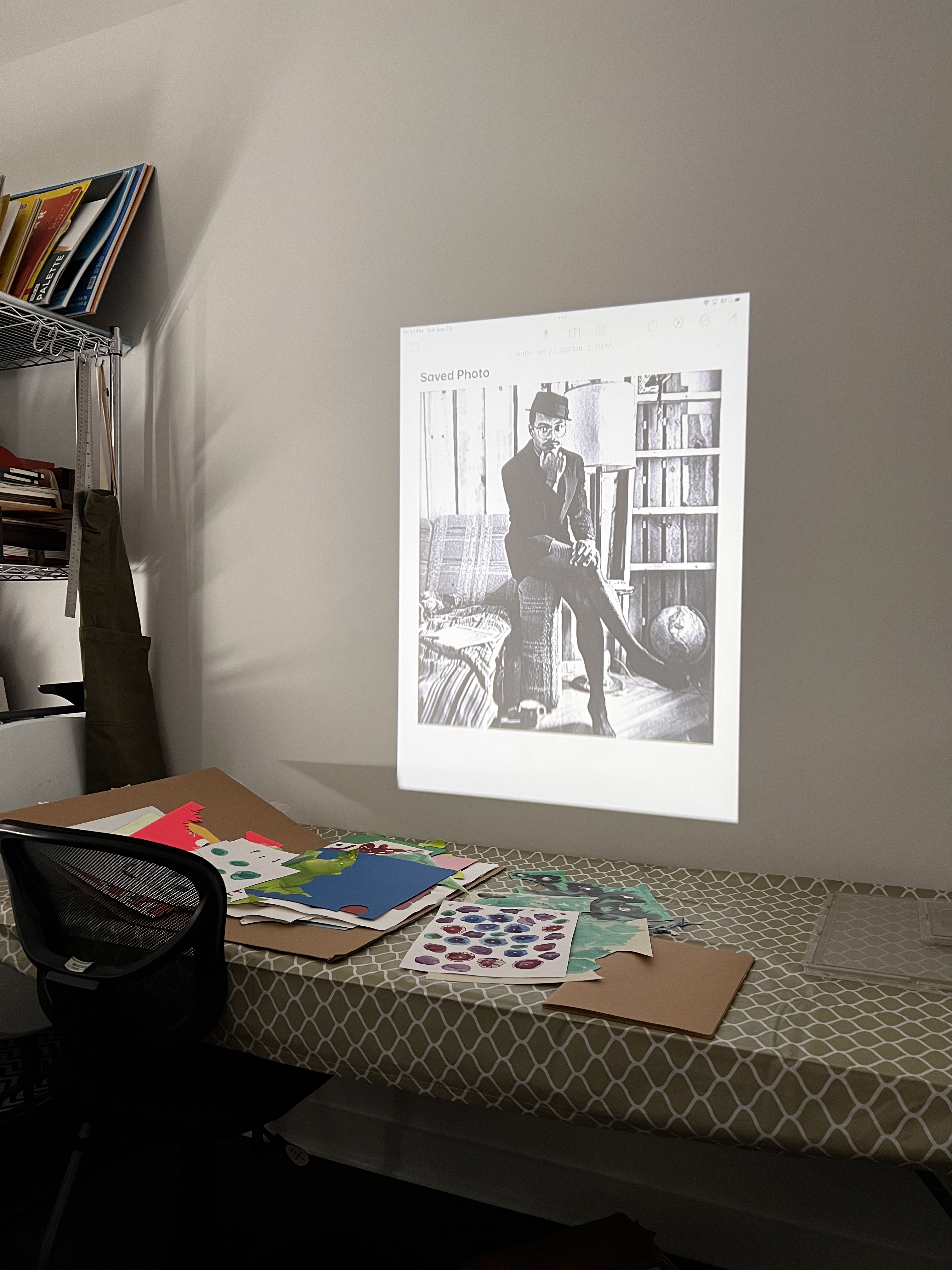
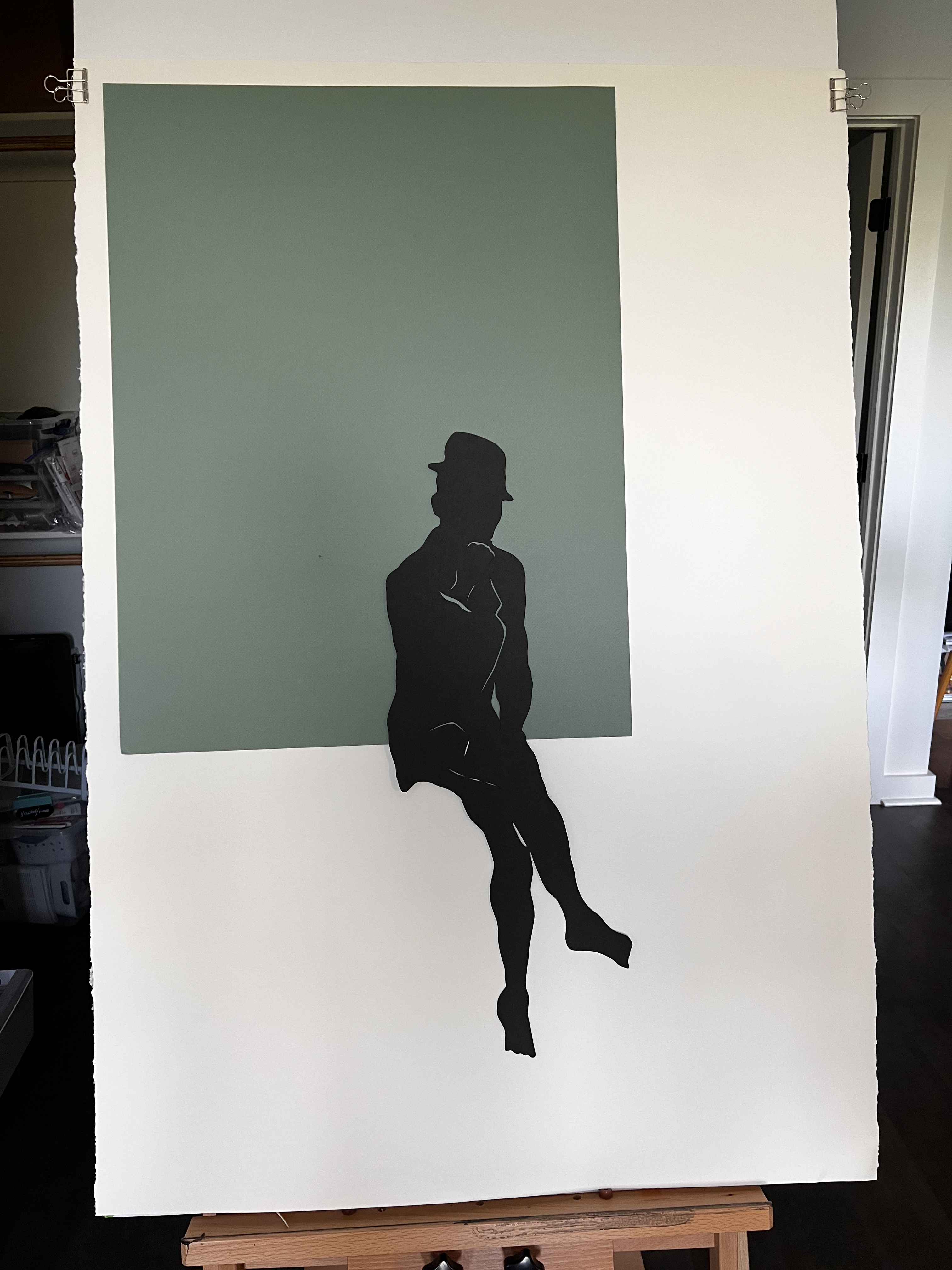
Anton Nimblett (AN): As I was preparing to talk to you, it struck me that it was the end of the year going into the new year. In your work I see a moment of transition from one place to another. I don't know if I'm projecting.
Llanor Alleyne (LA): That's not projection at all. That's intentional. I'm glad you can see that from a photograph. I didn't want to do a memorial piece. I wanted to center [Colin Robinson] in his life. He was between these two places, Trinidad and New York. I saw photos of where he was from, in a valley between these mountains, very picturesque. Then he comes to this urban jungle and he starts to transform that too with his activism and his poetry and just living his life to the fullest. That image I took to do the silhouette… when I saw it, I was so moved by it. Here's a Black Caribbean man, in the ‘80s, living through an experience I lived through as a child but from a very different perspective in terms of the AIDS crisis. He's in this city that is swirling around him and he's finding joy in just being who he is. He was here, he left marks, beautiful things came out of his existence with us. And he can live on in another way through this exhibition, with this piece—with all the pieces in the show.
AN: Are there particular decisions you made to capture that, to take us there?
LA: Yes. The red band on the left side of the collage is a window. One of the things I wanted to bring to this was a perspective. To literally show depth. Collage can be very two-dimensional, very flat. That's not how I approach collage. There is a juxtaposition of the natural beauty of the Caribbean versus the hardness and darkness of the city, an obvious metaphor. But what I wanted to do is also show that lushness that he lived and that he carried with him, wherever he was even if he's sitting between these two places. Where he's from is integral to where he came to be in New York or his life outside- of Trinidad—his diasporic life. When you look at the window, you see that the foliage is actually coming through it. You’ve got this jungle-y effect happening on the New York side, that diaspora side. He's bringing all that. That's following him into where he is. That never leaves him.
AN: When you said, the lushness he brought with him, I choked up for a moment, because in thinking about Colin…that captures so much. If you don't mind, I’ll share one small story.
LA: Of course, please.
AN: We were beginning to spend time together, maybe in the first year or two. And one day he said, “what's the name of that flower that you said you like?” I had once talked to him about how I love peonies and they’re only available in New York in May…this short window. Later, he showed up with peonies. Friend-to-friend. Bringing lushness to life. There's lushness in the foliage, in the flora of your piece, that I think really speaks well to that.
LA: Yeah, you have that story. I had his poems, You Have Your Father Hard Head.
I read that book three times before I even thought about what I was going to make for the exhibition. What came out of it was his level of care for others. There are lots of poems in there about him taking care of friends who are dying and I found that incredibly moving. Lots of lines and rememberings of his life in Trinidad that are difficult. But also women who came to his rescue, in some of those poems. And to me that iss the lushness again—there's an empathy that comes through that work. I was really moved by a lot of the imagery of his work.
One of the poems that I took a lot of inspiration from is the shortest one in the book, HIV at 50. [It ends, “left /standing holding the /camera”]. This thing of photographing the vulnerable, saying the vulnerability out loud, showing it. In the work there are a couple of references to that poem that are super-overt. In one corner, there's a camera. It's very hard to see, it's very purposeful. Then there's those pink flowers, they're wrapped with red ribbon, the symbol of the HIV projects. Then you have their leaves are red dashes which for me symbolized negative, his status. Surviving something where everyone was a plus and he was a negative, in a sense. Representing what he did with the Audre Lorde project, what he did with the justice project [CAISO], that's still going in Trinidad.
And there's still the language of the Caribbean [in the collection], the turn of phrase. All that, for me, is the lushness as well. And for me lushness translates through nature, which is where we get this epic imaginary foliage. I try not to copy things found in nature. An image might resemble something from nature, but nothing's ever really taken directly from it.
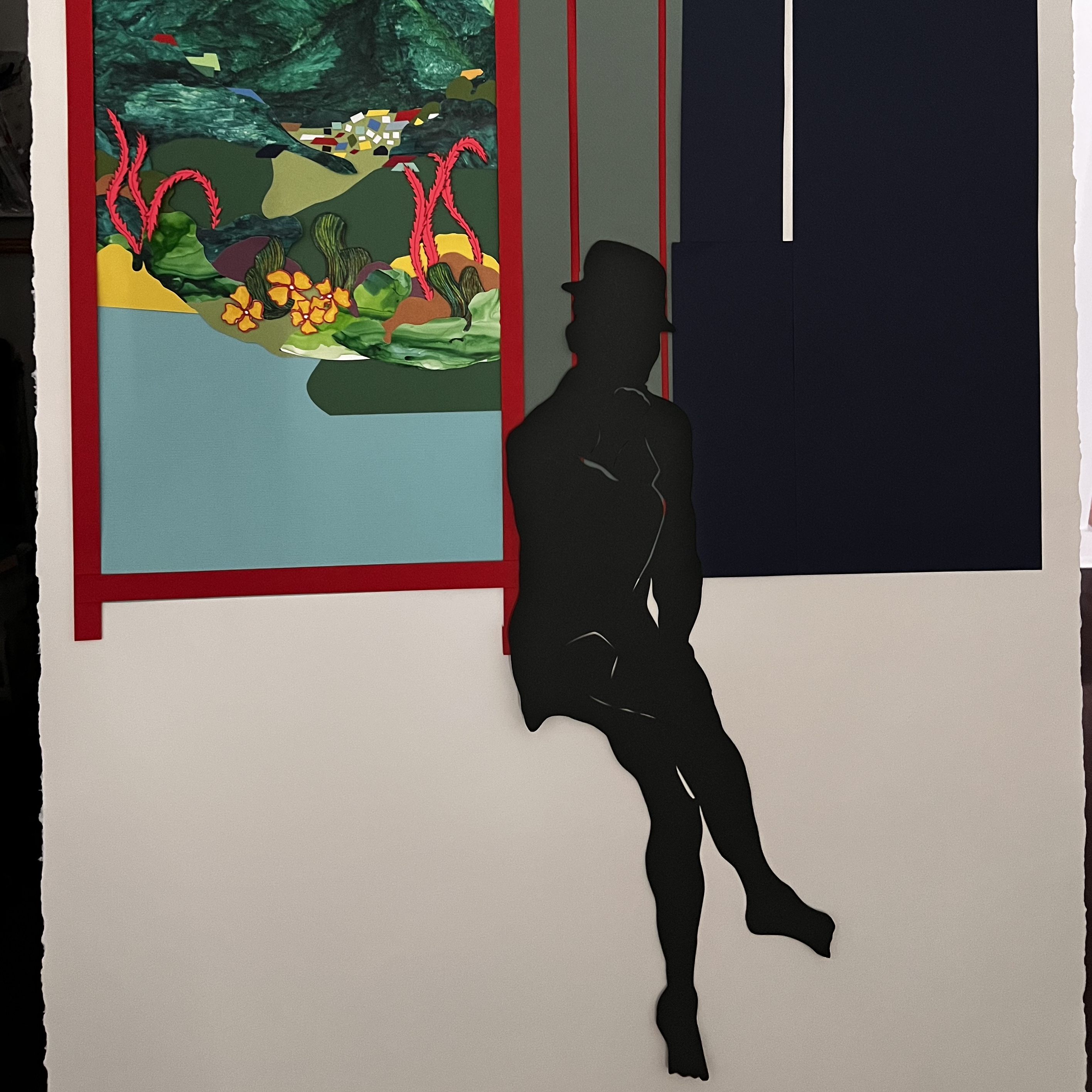
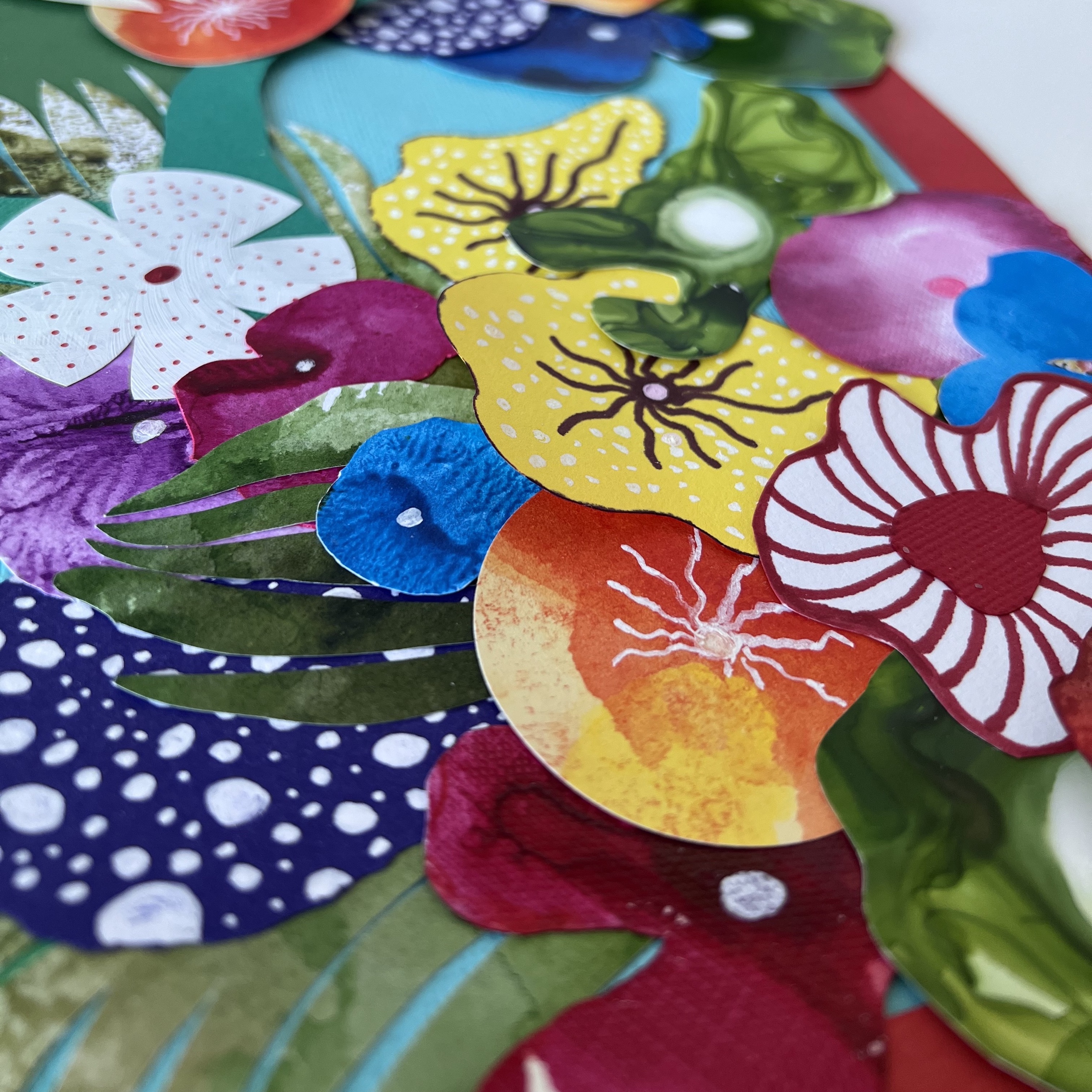
AN: Is Another Poem a little larger than you than most of your works?
LA: This is a second piece Andil and I worked on—they are the two biggest pieces I've worked on. I find a lot of inspiration in my friendship with Andil. He's very encouraging. He's never demanding. I put that demand on myself, more than he does. His ideas are so big and generous that they demand the bigger canvas.
AN: It’s crucial to be around people who do that for you. Colin was very much like that for me and for my writing. You hadn’t met him. You had the chance to read the collection. The collection was so important to him, and it was so important that it would live on. He envisioned that living on very much in a kind of call-and-response.
You mentioned that you saw some photos as well. Can you talk a little bit about how you worked in the archives, and how you decided which image to use?
LA: I saw plenty of images of Colin. He was a guy. He dressed as a guy. He always looked clean-shaven, bald-head, all the things. The picture of him in his living room, young, vibrant, stockings on, was such a contrast to every other image I had seen of him. When a singular image like that stands out amongst a bunch of other images, that makes you see things in a different light. That to me was a very vulnerable image. He's been photographed in the world in a certain way. And here's this image that is intensely intimate, private but totally him. That's the one where I saw the most spirit.
AN: I know you work more often with images of women. Not to read it too simply, but I wonder if there was some connection in that image, a more androgynous Colin in that moment, that allowed you to make a connection to the way you normally…
LA: …present?
That was a subconscious connection. I did make sketches with him in a very shirt-off mode. I did make a piece where he was very much “man”. It looked very funereal to me. It didn’t feel right. But yes, there's something feminine in that photo that I definitely connected with. If you can find your place amongst the many ways we can gender ourselves, please go for it. He's doing it in the privacy of his home and there's something about that too, that intimacy. Because the thing about my work is, it is about intimacy. Every piece I make is about these women in a setting where they're being intimate. The outside world…it's not coming in. That's the allegory of paradise for me: you can look but you can't touch, you can't come in. These people are having a moment to themselves, they don't care about you.
And to me this photo represents that. For me the piece—because that's just the nature of my work—had to say that as well. I think that's again why it was the best choice for me, of all the things I saw in him. I didn't need to make up a figure. He told me who he was. This connected with me as a woman who loves the bodies of women and loves the bodies of the other. He spoke to me in that way.
AN: You’ve put it in the collage.
LA: Can I speak to something you said earlier?
You said he really wanted You Have Your Father Hard Head to be something he left to the world. Which is why the [collage’s] title is Another Poem. It’s taken from one of his poems. There's a line about “just another poem.” I took the ‘just’ off because there's no such thing as just another poem, to my mind. I wanted this to be an extension of that work because it is such an influence on it. So, if Colin is saying, “I want my this to be one of the things that people remember [me] by” … I didn’t know that. I'm really happy with that title now. I was struggling with it, but it feels right. It feels like he would want more of his work out there, and this is about him, so that's where the title comes from.
AN: I couldn't be happier knowing where that title came from. I’m glad I was able to add something to that.
LA: It had to be from the book but it also has to be of the book and of the work itself. It's not just another poem or the other poem—it's an extension of this collection that he spent so much time building. I love other artists. And I love people who think with artistic vision.
AN: Collaboration was super important to Colin as well. He did so much work to select the cover of the collection. I don't know if you know any of that background.
LA: I would love to hear it.
AN: He wanted, passionately, an original artwork for the cover. From a place of collaboration, wanting to work with others, which is what he did in his personal life, his advocacy work, all of his life. He wanted original artwork because he also wanted to celebrate an artist.
He selected this artist [Kriston Banfield], a local artist. They came up with this image through a series of conversations and working together. It wasn’t something that already existed.
LA: Love to hear that.
AN: Again, the call-and-response. In the work that you've done in the archives and getting to know him. I see this sort of mirroring of lives and mirroring of creation in how you talk about your work getting to this place.
LA: Wow, it makes sense. I've worked with him. He wasn't here, but he left me this work to pull from and to work with him on. I hope he's happy with it.
